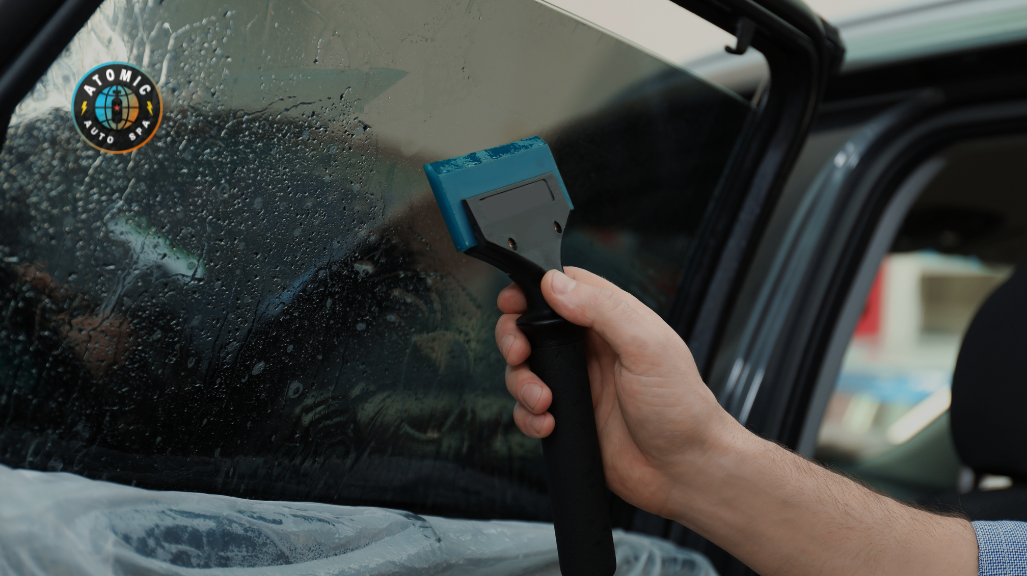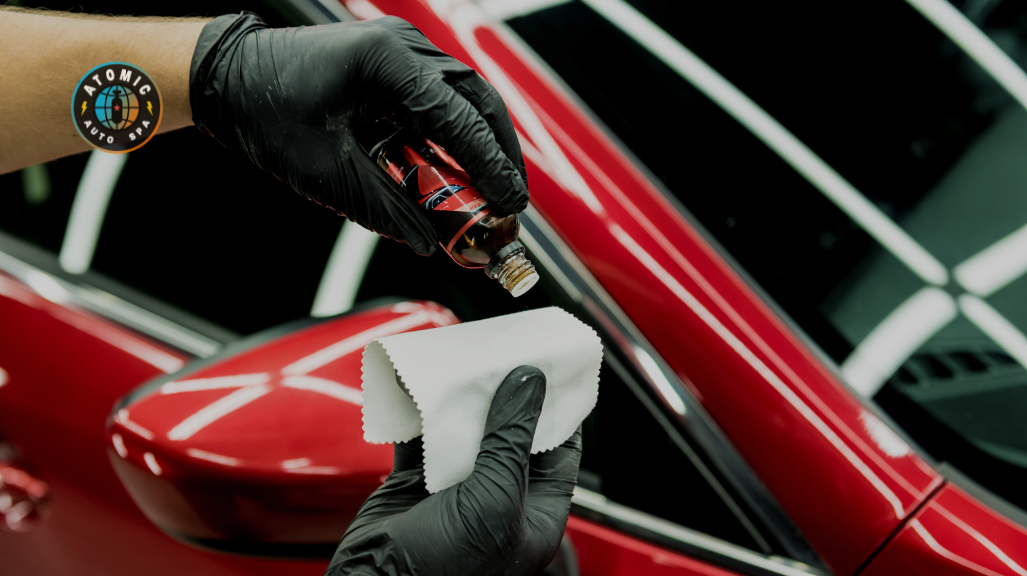How Dry Ice Cleaning Handles Stubborn Road Tar and Grime
Dry ice cleaning tackles stubborn road tar and grime by rapidly cooling contaminant layers, causing micro-cracks that make them brittle and easy to remove. The sublimation process expands CO₂ into gas, lifting grime without scratching or harming the paint. This non-abrasive, residue-free cleaning method is highly effective for even the toughest residues, making it a game-changing solution in vehicle detailing.
Key Takeaways
Non-abrasive: Removes road tar and grime without scratching vehicle surfaces.
Eco-friendly: Uses CO₂ pellets, eliminating the need for chemicals.
No secondary waste: Leaves no water runoff or residue.
Time-efficient: Reduces labor costs and cleaning time.
Preserves vehicle paint: Ensures a pristine finish without damage.
Superior to other cleaning methods: Dry ice cleaning avoids harmful chemicals and residues.
The Science Behind Dry Ice Cleaning with Solid Carbon Dioxide
Dry ice cleaning relies on sublimation—a process where dry ice shifts from a solid to a gas without a liquid phase. When CO₂ pellets impact grime-covered surfaces, they supercool the contaminants, causing them to crack and break apart. At the same time, the pellets expand into gas, lifting grime, tar, and grease off the surface. This is how dry ice blasting works to effectively clean vehicle surfaces without causing damage.
This method is:
✔ Non-toxic – No harsh chemicals required. ✔ Precise – Targets only contaminants, leaving paint untouched. ✔ Fast-drying – No drying time required.
By understanding this process, vehicle owners can see why dry ice cleaning is the safest method for paint preservation.
Comparing Dry Ice Cleaning to Traditional Methods
|
Factor |
Traditional Cleaning (Solvents, Pressure Washing) |
Dry Ice Cleaning |
|---|---|---|
|
Abrasiveness |
High – May scratch surfaces |
None – Safe for paint |
|
Chemicals Used |
Yes – Harsh solvents required |
No chemicals |
|
Waste Produced |
Water runoff, chemical residue |
None – CO₂ sublimates |
|
Downtime |
Longer – Drying required |
Immediate use |
|
Cost Over Time |
Higher – Frequent cleaning required |
Lower – Long-lasting clean |
🚀 Key Insight: Traditional cleaning methods risk surface damage and create waste, while dry ice cleaning is safer, eco-friendly, and cost-effective in the long run. Unlike traditional cleaning methods, dry ice cleaning is non-abrasive and leaves no harmful waste.
How Dry Ice Cleaning Removes Road Tar and Grime
Step-by-Step Process:
1️⃣ Surface Cooling – Dry ice pellets, made of solid carbon dioxide, are propelled onto the contaminated area, supercooling tar and grime.
2️⃣ Micro-Cracking – The rapid temperature drop weakens the contaminant bonds, making them brittle.
3️⃣ Sublimation Lift-Off – The dry ice turns into gas, expanding beneath the grime and lifting it away. 4️⃣ Residue-Free Finish – No water, detergent, or chemical residue is left behind.
💡 Why It Works: Unlike pressure washing, which spreads grime, or solvents, which can damage paint, dry ice cleaning removes contaminants at a molecular level without affecting the vehicle’s finish.
Case Study: Restoring a Luxury Sports Car with Dry Ice Cleaning
The Challenge
A 2021 Porsche 911 Carrera had hardened tar deposits and grime buildup after multiple track days. The car owner had tried pressure washing and chemical tar removers, which left minor swirls and didn’t fully clean the surface.
The Dry Ice Cleaning Solution
A professional detailing team used dry ice blasting to lift tar and contaminants without affecting the factory paint or clear coat.
✔ Result: 100% tar removal in under 45 minutes, zero abrasions, and no need for touch-ups or repainting.
💡 Lesson Learned: Dry ice cleaning is the go-to method for preserving high-end vehicles while achieving a flawless clean.
Environmental Benefits of Dry Ice Cleaning
|
Aspect |
Traditional Methods |
Dry Ice Cleaning |
|---|---|---|
|
Chemical Runoff |
High |
None |
|
Water Usage |
High |
Zero |
|
Air Pollution |
Possible (solvent fumes) |
None |
|
Eco-Impact |
Leaves toxic residues |
100% green |
🌍 Dry ice cleaning is a zero-waste, chemical-free method, making it the most eco-friendly vehicle cleaning solution available. Dry ice cleaning uses solid carbon dioxide, which sublimates without leaving any harmful residues.
Cost Analysis: Dry Ice Cleaning vs. Traditional Tar Removal
|
Factor |
Traditional Cleaning |
Dry Ice Cleaning |
|---|---|---|
|
Average Cost Per Session |
$150 - $400 |
$250 - $600 |
|
Equipment Needed |
Brushes, chemicals, towels |
Dry ice blaster, CO₂ pellets |
|
Time Required |
2-4 hours |
30-60 minutes |
|
Long-Term Savings |
High frequency of cleaning needed |
Less frequent maintenance required |
💰 Is Dry Ice Cleaning Worth It? While initial costs are higher, the long-term savings make it a smarter investment for car owners who want preservation without damage, compared to other cleaning methods.
Frequently Asked Questions (FAQ)
-
Yes! Dry ice cleaning is a non-abrasive cleaning method and works on paint, chrome, rubber, and plastic without causing damage.
-
Absolutely. Unlike solvents that smear tar, dry ice cleaning breaks down and lifts contaminants entirely, ensuring a thorough cleaning.
-
Most professional sessions last between 30-60 minutes, depending on tar severity and vehicle size.
-
DIY dry ice cleaning requires specialized equipment, so professional services are recommended for best results.
-
For daily drivers, a session every 6-12 months is ideal. For track or high-performance vehicles, quarterly cleaning maintains peak condition.
Give Your Vehicle the Ultimate Clean!
💎 Want a pristine, tar-free finish without damage? Atomic Auto Spa offers professional dry ice cleaning services tailored to preserve and protect your vehicle. Book a dry ice cleaning session today and experience the future of vehicle detailing!
👉 Contact Atomic Auto Spa



